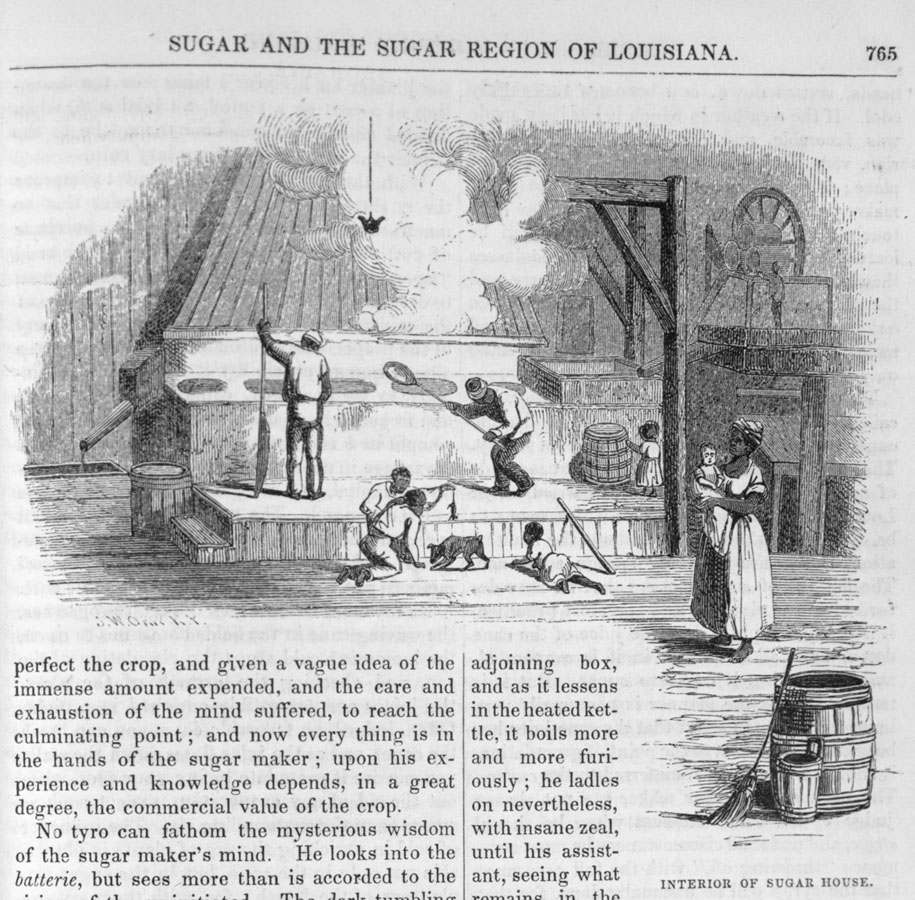There was a long history of sugar and rum production in Louisiana, going back to the era when it was still part of the French dominion. Production continued until Prohibition shut down both the distilleries and most of the sugar plantations, since without a market for molasses the latter were unprofitable. The heyday of sugar production was shown in this 1851 illustration from Harper’s Magazine, which shows a tranquil day in the sugar house. The children are playing with a dog and a mouse, with the mouse getting the worst part of the deal: 
The oddest thing about this article, which goes exhaustively into every detail of producing crystalline sugar and runs 1,494 words, is that the word rum does not appear even once. There is a note that the plantation managers are dismayed when a particular harvest produces much molasses and little sugar, and a note that the molasses was sold for much less than sugar, but there was no suggestion what the buyer might have done with it.
Liquor made from sugar cane products in Louisiana was often called tafia, but that name does not appear in this article either. The two terms may be interchangeable, but some documents refer to the manufacture of “tafia and rum” that suggest a distinction between a lower and higher quality product, or perhaps a difference in the distillation process. My surmise has been that the tafia might have been made from sugar cane juice in an agrichole style, while the rum was made from molasses, but I have never been able to confirm this. On the other hand, I have found examples of professionally bottled rum but not tafia, like this “Rhum Louisiane” dated 1865 – it was bottled in Havre, France, presumably from liquor shipped there before the Union blockade of the Confederacy. For years I have been trying to find any contemporary description of tafia by anyone who had drunk rum elsewhere, but I have had no luck so far. I continue to search for contemporary comparisons, and if anyone can help untangle this I would be grateful. If you find any contemporary reports of any nineteenth century rum or tafia, please send me the text and citation – it would be wonderful to be able to sort this out.
For years I have been trying to find any contemporary description of tafia by anyone who had drunk rum elsewhere, but I have had no luck so far. I continue to search for contemporary comparisons, and if anyone can help untangle this I would be grateful. If you find any contemporary reports of any nineteenth century rum or tafia, please send me the text and citation – it would be wonderful to be able to sort this out.
